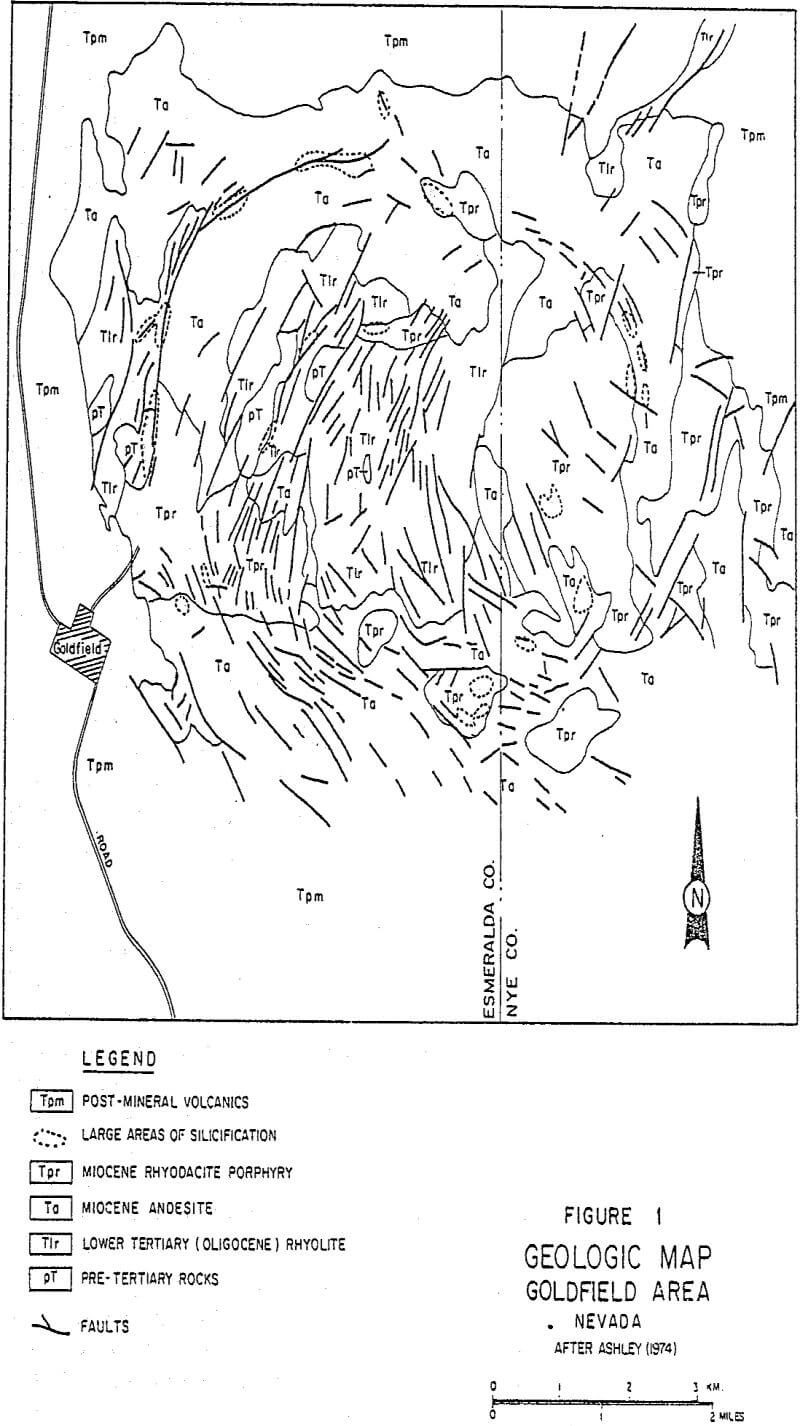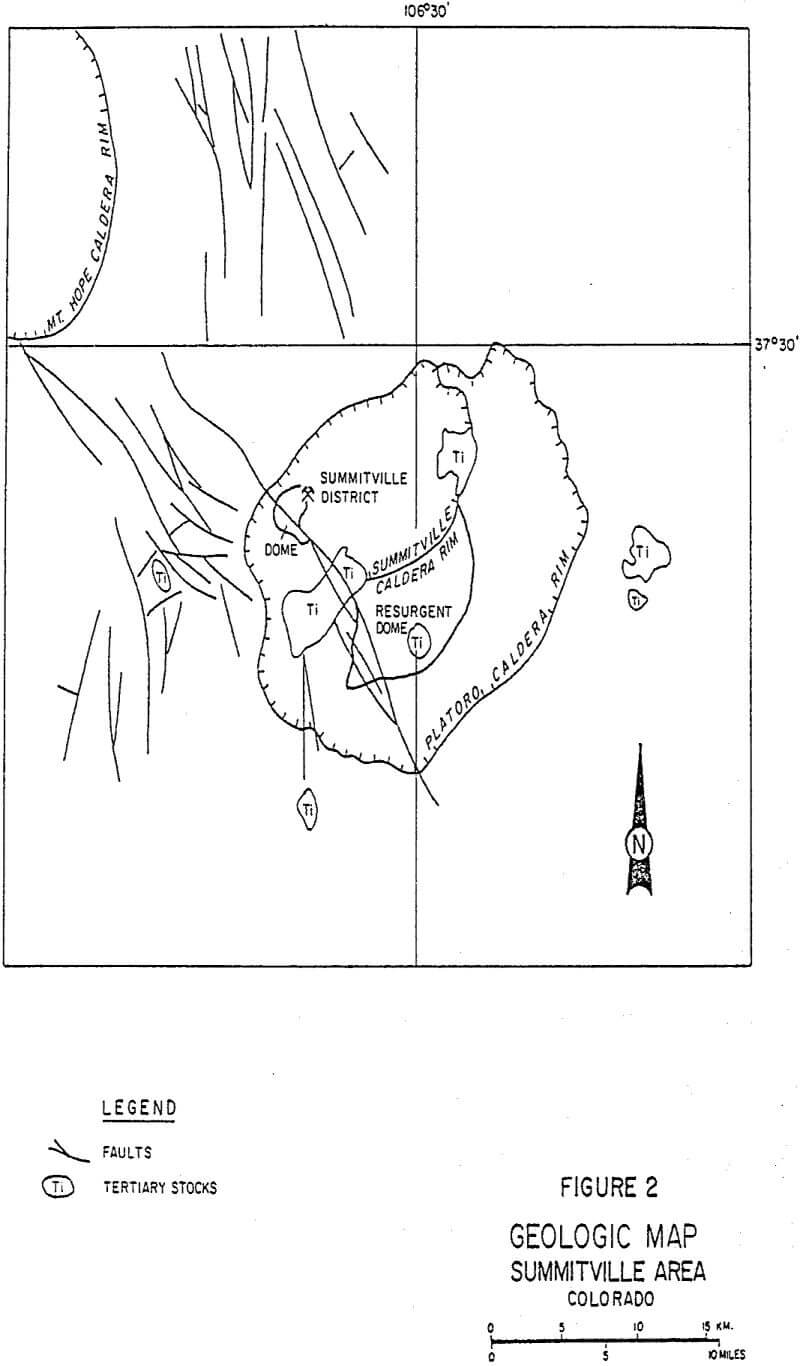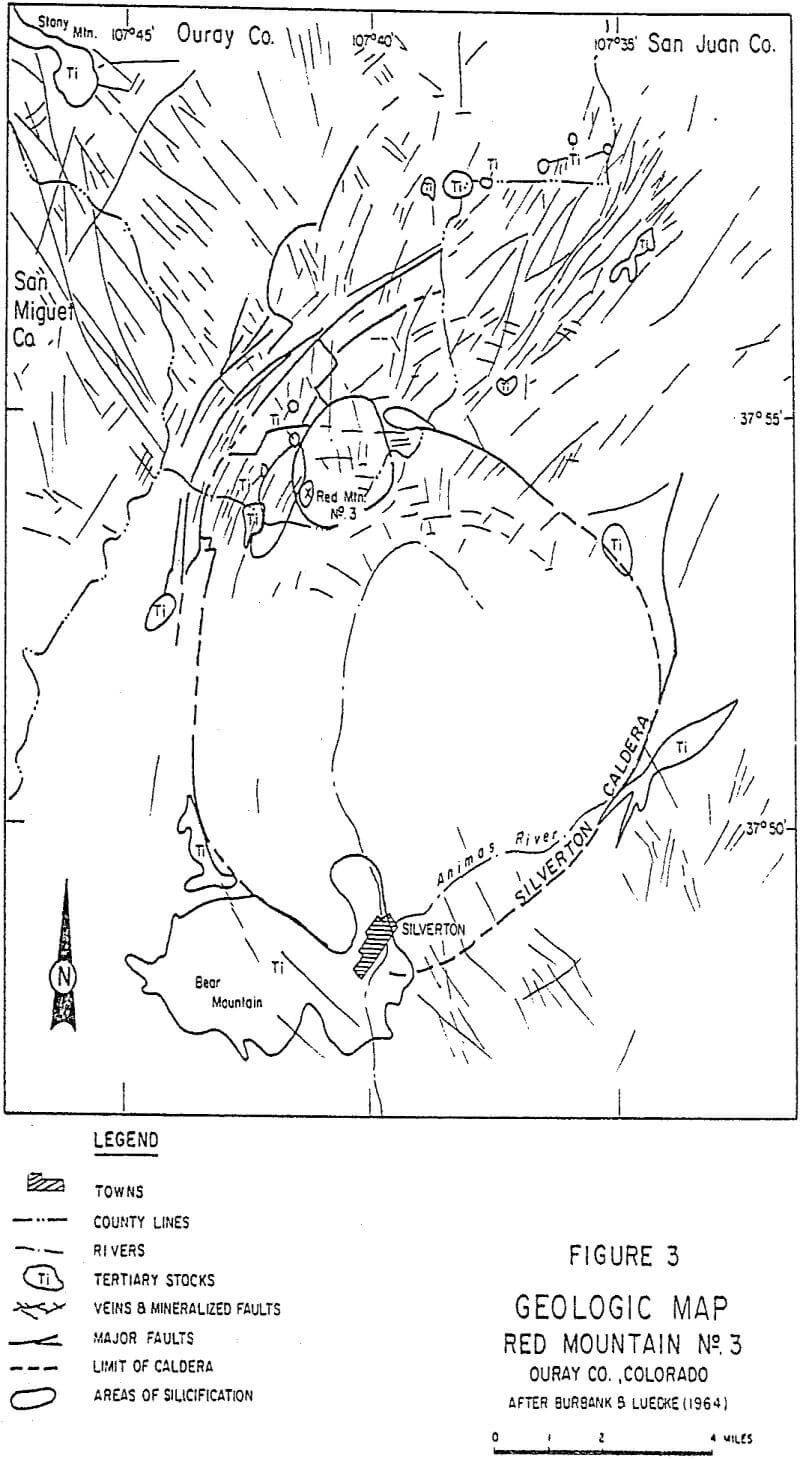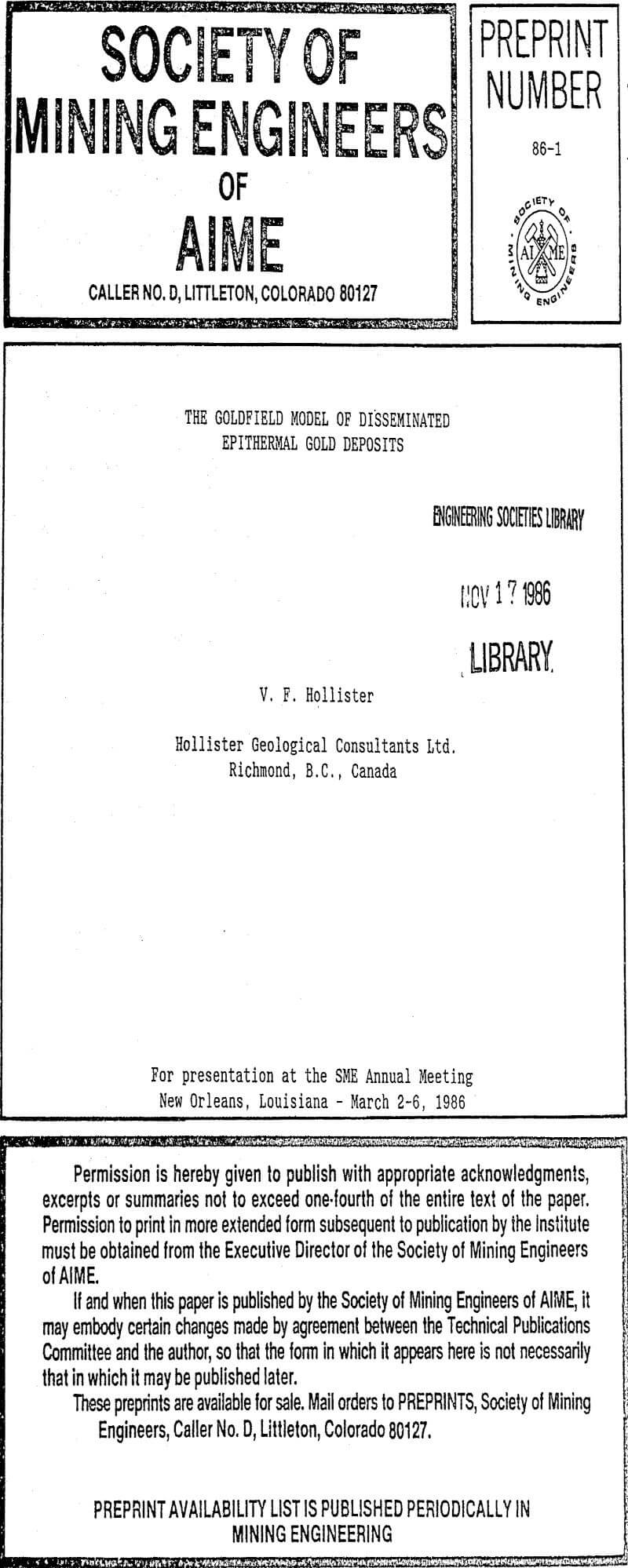Table of Contents
Epithermal gold deposits occur in and near the marginal fault that circumscribes the Goldfield, Nevada, Tertiary caldera. The gold occurs disseminated in alunite, pyrite, and kaolin- bearing silicified zones that are controlled by the circular faults. Other Tertiary calderas (i.e., Summitville and Red Mountain No. 3) have epithermal disseminated gold deposits located in and near their marginal circular faults in settings that resemble the Goldfield example.
Geologic Setting of Goldfield, Nevada
Goldfield, Nevada is perhaps the best documented of the three districts. It is a Tertiary volcanic center that sustained a major mineralizing event at about 21 m.y. B.P. The volcanic rocks and the underlying pre-Tertiary plutonic and metasedimentary rocks of the district are extensively altered. Ashley and Keith (1976) show that the Goldfield district is mostly a 0.5 square mile mineralized area near the town of Goldfield, but that argillic alteration extends for about 15 square miles. Within the altered area, lying just east of Goldfield, is a complex circular feature that is about 5 miles (8 km) wide.
Precious metal mineralization occurs with some tabular silicified “ledges” composed of microcrystalline quartz, primary alunite, pyrite, and kaolinite. These developed adjacent to fractures and in breccias.
Gold mineralization appears within silicified zones where brecciation or fracturing continued after silicification but before hydrothermal activity ceased. Mercury, arsenic and antimony occur anomalously in and near gold deposits. Silver also occurs, but is mostly concentrated in distinct settings. Oxidation persists to as much as 250 feet, but below that gold is accompanied by sulfosalts, sulfides, and very rarely, tellurides. Famatinite and tetrahedrite were the most common sulfosalts.
Geologic Setting of Summitville
It is an epithermal gold deposit formed on the western margin of the Summitville Caldera, where a quartz latite dome developed along a major northwest-trending fault near its junction with the margins of the Summitville and Platoro calderas. The quartz latite porphyry dome has intrusive and extrusive phases, both having the same mineralogy. The Summitville caldera lies nested within the Platoro caldera, occupying its northern half.
Gold mineralization occurs near the surface most strongly disseminated within the zones of silicification, but it also is found in trace amounts in the argillic altered rocks. Mercury, antimony, and arsenic occur anomalously in and near exposed disseminated gold deposits. At depth gold mineralization is accompanied by enargite and other copper minerals in massive pyrite veins. An underground reserve of approximately one million tons has been defined at depth in veins that carry about 3% Cu and 3 oz. Ag as well as gold. Gold occurs native and as electrum in the silicified zones. Oxidation may extend as much as 500 feet below the surface.
The Goldfield Exploration Model
Calderas developed in altered rocks provide an excellent prospecting terrane for precious and base metal deposits. However, those seeking disseminated gold deposits in calderas should be aware of the features commonly shared by Goldfield, Summitville, and Red Mountain No. 3. These geologic features can be expected to occur in some other calderas, and they therefore constitute a prospecting model.
The gold deposits occur as disseminations in silicification at or near the rim of a caldera. Nested calderas are particularly favorable, with the common margin of the older and younger calderas providing the most interesting structure for control of epithermal fluids.
Disseminated gold deposits occur in silicified igneous rocks with microcrystalline quartz dominating the ores. Gold occurs with anomalous arsenic, antimony, and mercury values near the surface. Silver is found zoned away from the gold, and base metals occur at depth, usually accompanied by gold and silver. Gold occurs disseminated in zones of pervasive silicification , and the gold deposits formed can be large tonnage, bulk-mining type targets. Copper sulfosalt-bearing Cu-Ag-Au deposits underlie the surficial disseminated gold occurrence, and these occur in structures rich in pyrite.




